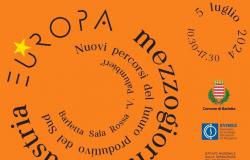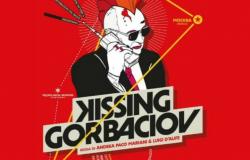Naples (Renato Casella) – Parking in the city is increasingly a business for the rich. Prices in the central areas have nothing to envy those of Rome and Milan, with the aggravating circumstance of very limited alternative transport options. In the Chiaia area, a day of parking can cost from 40 to 50 euros (depending on the size of the car), but there are also those who ask for 60. In Vomero the daily rate is around 45 euros, in Via Roma between 30 and 40 depending on the car and even in Porta Capuana we are on these figures.
Cheaper are the central station area (from 25 euros and up for small cars) and Fuorigrotta, where the fare is also around 20 euros. But the real drain is on the occasion of concerts or sporting matches: in those cases the spectator, who has already spent good money to attend the event, must budget another tens of euros to be able to stay.
Contrary to what one might think, Rome and Milan are not more expensive: in the capital, in the Villa Borghese area you can get by for 22 euros, as well as in the Termini station area (but here the price rises up to 36 euros for cars larger).
In Milan the Piazza Duomo area ranges from 25 to 60 euros, while in the station area you have to pay between 22 and 30 euros. But in the Lombardy capital there is an alternative, thanks to efficient metropolitan transport.
Then there is the particular case of the “tourist trap” in Florence, where in the Santa Maria Novella area you pay 72 euros. The expensive parking in Naples is probably also a consequence of the tourism boom that has been taking place in recent months: when demand increases, prices rise. At the end of 2022, the case of a lady who published the receipt for a private car park in the city center online caused controversy: a 7-hour sightseeing tour cost her 84 euros, therefore 12 euros per hour. The managers’ justification, as always happens in these cases, is that there is no limitation on the prices of a private service and that if the rates are displayed in a visible place there is little to complain about: everyone is free to decide that the cost is excessive and to go elsewhere. But those who want to indulge in even a simple walk in the city must budget for a considerable expense. Not to mention commuters, who cannot always rely on public transport and therefore have to allocate part of their salary to “parking” every month.
However, we are talking about authorized parking: if we move on to illegal parking, the situation is different. Nowadays the classic “offer at will” is not found very often: particularly in front of clubs where evenings are held there are those who ask for a rate that can even reach 5-10 euros for parking. And this is certainly not an incentive for a sector like the entertainment one, which is still trying to return to pre-Covid levels. The same goes for Napoli’s home matches: transport to the stadium is insufficient and many still reach the area by car, therefore having to incur additional costs. And this year, given the results of the Azzurri, the show was definitely not worth the expense.
And for traffic fines Naples brings up the rear
Naples (RC) – And the Neapolitan capital is last in Italy for proceeds from traffic fines. In 2023, the proceeds collected by the main municipalities thanks to traffic fines increased by +6.9% compared to the previous year, reaching a total of 584.7 million euros in the 20 largest cities in Italy. This was stated by Codacons, which disseminates a study carried out on the reporting published online by the Ministry of the Interior and based on the data that local authorities must provide by May 31st of each year, referring to the sums actually collected by local administrations through sanctions for violations to the Highway Code and their use. Once again the Italian city that holds the record in terms of proceeds from road fines is Rome, with over 172 million euros in 2023, up by +29.7% on 2022, followed by Milan with 147 million euros (- 3% on 2022). The situation changes if we analyze the trend of high fines through speed cameras, devices which last year guaranteed the main cities revenues for a total of 65 million euros: in this case Florence is the city with the highest collections, equal to 18.7 million euros, followed by Milan (8.5 million), Rome (7.5 million) and Genoa (5 million). Considering the number of inhabitants in each municipality, Potenza and Florence boast the highest per capita value of fines, with an amount equal to over 123 euros per resident, 111 euros in Bologna, 107 euros in Milan. Naples brings up the rear, with just 8.2 euros per capita, compared to the national average of 55 euros. Overall, the proceeds from traffic fines rose by 37.7 million euros in a year, equal to a percentage increase of 6.9%, observes Codacons. And there is no shortage of surprises. The association’s study highlights, for example, how Potenza is the city where the strongest growth in revenues is recorded: here, in fact, revenues double and go from 3.7 million euros in 2022 to 7.9 million euros in 2023, with an increase of +110% in just one year fueled by the 4.8 million euros in fines guaranteed by the speed cameras installed along the roads of the municipality. The collections of Catanzaro (+41.8%), Venice (+39.5%), Pescara (+32.8%) also grew strongly on an annual basis. 9 cities out of 20, however, recorded a decrease in revenues, with the peak of Trieste which in 2023 recorded revenues 33% lower than the previous year, followed by Naples (-15.5%) and Palermo (-10%).
“In the face of these impressive numbers – says Codacons president, Carlo Rienzi – we cannot help but wonder what happened to the Observatory on road fines introduced in 2023 and which should have come into operation within 90 days of the decree being converted into law ( published in the Official Journal on 16 August 2023) with the task of producing an annual report, as well as verifying the reports of consumer associations operating in the sector and requesting data and information from the competent administrations”.
On the limited collections from fines, city councilor Nino Simeone, president of the Infrastructure commission, observes: “There are two options: either the Neapolitan motorist, despite the usual clichés, is very disciplined or our traffic police, unlike those from Milan, Rome and Florence, they are too good. I believe that this low number is the consequence of the fact that there are many fewer speed cameras on our city streets than in other cities. And in any case, in my opinion, the instrument of the fine should represent a warning towards undisciplined motorists, not a tool to make the Municipalities make money”.
© ALL RIGHTS RESERVED






